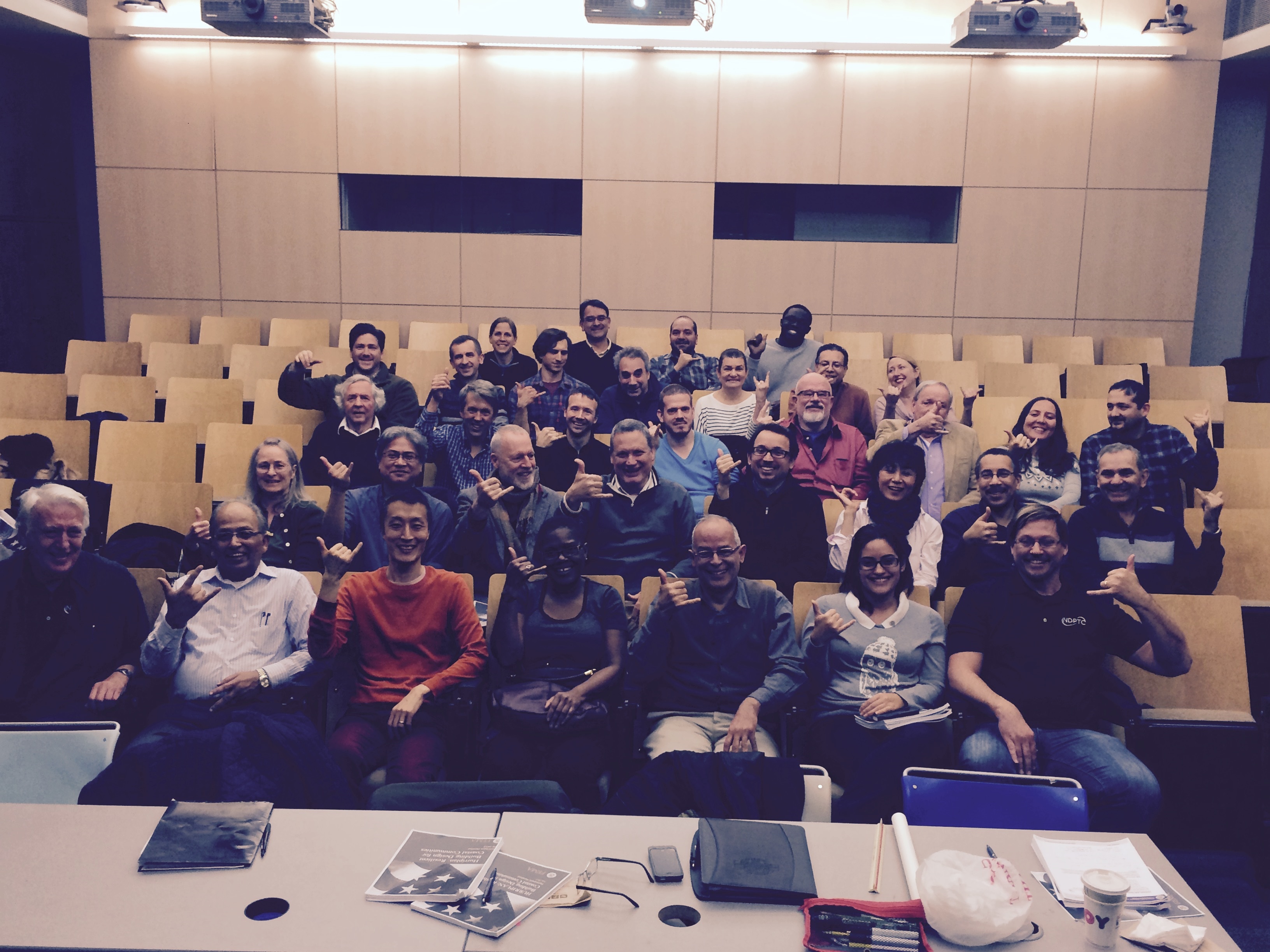by: EmmaPattiz
There are 207 branch libraries in New York City, divided between three different library systems – New York, Queens, and Brooklyn. The systems, however, share similar missions and thus face similar challenges. In September 2014, the Center for an Urban Future (CUF) released the Re-envisioning New York’s Branch Libraries report, which unveils many structural and programmatic issues that these libraries face, and recommends ways to address them. CUF and the Architectural League solicited design studies from six interdisciplinary teams to respond to the report and expand on possibilities for the future of NYC’s libraries.
At a design showcase and policy symposium on 12.04.14, the teams presented their recommendations, and stakeholders (policymakers, librarians, academics, designers, and advocates) responded to the design presentations. The design teams primarily addressed three themes: integrating libraries into New York City’s housing and community development goals, reconfiguring libraries to meet community needs, and developing new ideas and strategies for expanding the impact of branch libraries. Some common approaches emerged. Many of the teams called for unifying the three separate library systems into one city-wide operation, while acknowledging and expanding the ways in which libraries can fill social service gaps, enhance their marketing tactics, find ways to increase funding through public and private means, specialize libraries by neighborhood, and address whether to prioritize virtual communities or physical social spaces.
This unique gathering shed light on the multifaceted issues plaguing our city’s valued library systems, and emphasized the necessity of design in confronting these challenges. To learn more about the event, the design presentations, and the movement to upgrade our libraries, visit http://www.reenvisioninglibraries.com/.
Pulse Points
- The New York City Housing Recovery Office (HRO) and the New York City Department of Design + Construction (DDC) are issuing an RFP to procure construction management, design, and contracting services to assist homeowners and landlords rebuild and repair their Sandy-damaged homes. On 12.19.14, there will be a pre-proposal conference at 10:00AM and a networking event at 12:00PM at DDC Headquarters. Submissions are due 01.12.15. Review the RFP here.
- The National Council of Architectural Registration Boards (NCARB), the Canadian Architectural Licensing Authorities (CALA), and the Federación de Colegios de Arquitectos de la República Mexicana (FCARM) finalized a tri-national agreement that recognizes architects’ credentials in the U.S., Canada, and Mexico. For more information about how qualified architects can fulfill the requirements of the agreement and gain the ability to practice in the neighboring countries, please see the press release here.
- The Royal Institute of British Architects (RIBA) Board overruled its advisory council’s proposal to suspend the Israeli Association of United Architects (IAUA) from the International Union of Architects (UIA), claiming that the national organization is complicit in the construction of illegal settlements in the West Bank and East Jerusalem. AIANY opposed RIBA’s position in May 2014. More info on the decision here.
- The Trust for Public Land will receive almost $444,000 from Governor Cuomo’s Regional Economic Development Council initiative to design the first phase of the QueensWay, to be led by dlandstudio and WXY architecture + urban design. The QueensWay is one of 71 projects in NYC that will receive funds. Read more here.
- On 12.15.14, Mayor de Blasio and local officials and community leaders broke ground on 535 Carlton Avenue, a 298-unit residential building that will be 100% affordable. The building is being developed by Greenland Forest City Partners and is the second affordable housing project at Pacific Park Brooklyn. Read the press release here.
- The de Blasio Administration and the New York City Housing Authority (NYCHA) will create a nonprofit arm to raise tax-deductible donations from the private sector to allocate towards capital upgrades. NYCHA hopes that the nonprofit will raise hundreds of millions of dollars to support its public housing stock. Read more here.
- Protests continue in an attempt to stop the demolition of the historic Renaissance Casino in Harlem. The Renaissance Casino, on the corner of West 137th Street and Adam Clayton Powell Jr. Boulevard, is not a designated landmark, and BRP Development Corporation plans to build 134 mixed-income residential units, retail space, a community space for churches, and a 67-car garage on the site. More information about the advocacy efforts here.
- After facing opposition from preservation activists, the NYC Landmarks Preservation Commission announced on 12.14.14 that it would postpone its plan to rapidly review about 100 backlogged properties that have been on its calendar for five years or longer. This deferral will provide the public more time to provide input on properties. Read more about the decision here.
- On 12.15.14, Scientific American published a piece on the intersection of design choices and health outcomes. The article also includes an overview of the AIA’s three-year partnership among 11 architectural schools whose research programs will further explore the connection between building design, city planning, and health. There is also a reference to NYC’s Active Design Guidelines and AIANY’s 2013 FitNation exhibition.
- The NYC Landmarks Preservation Commission voted on 12.16.14 to approve the conversion of 346 Broadway into a residential building. On 11.18.14, AIANY submitted testimony in favor of the project.
- On 12.16.14, Governor Cuomo and Mayor de Blasio announced an RFP for the study and design of an integrated flood protection system in Red Hook, Brooklyn. The City and State are each committing an initial $50 million to make the waterfront community more resilient in the face of future storms
- The Senate voted to extend the 179D energy efficient commercial building tax deduction. Section 179D provides a tax deduction for energy efficient buildings and also allows public building owners to allocate the deduction to the designer of energy efficient property. Designer can design the most energy efficient buildings and building owners can finance those designs. The AIA has been advocating for its passage. Read the AIA press release here.
Emma Pattiz is the AIANY Policy Coordinator. For more information on AIANY policy initiatives and programs, please contact her at epattiz@aiany.org








